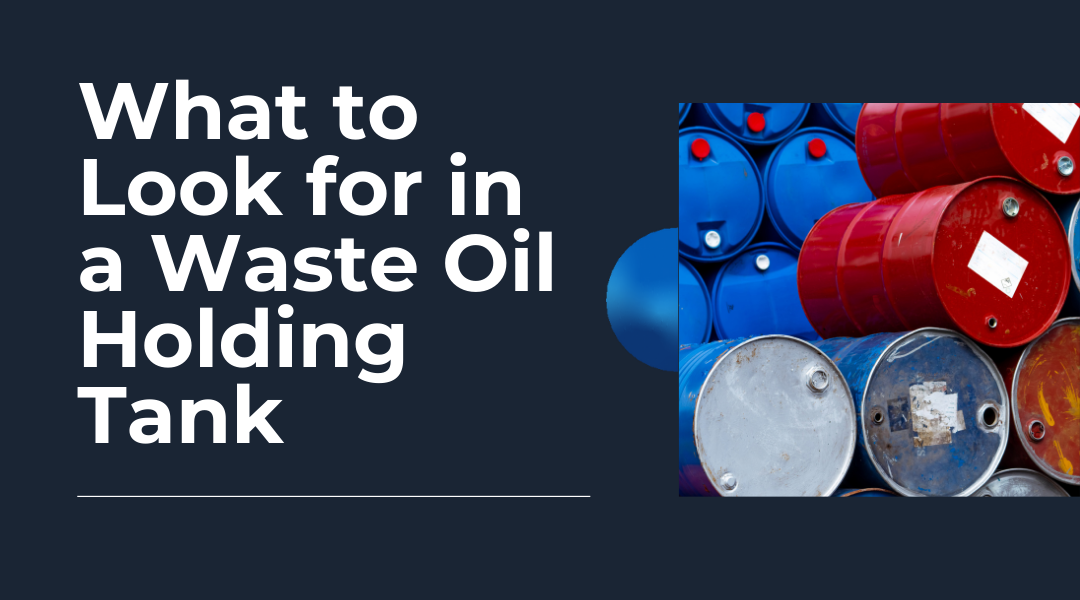A waste oil storage tank is specifically designed to store waste oil. Sophisticated waste oil storage or holding tanks are sustainable and highly effective at maintaining the cleanest possible waste oil by reducing the potential for contamination. These tanks help to remove excess impurities from the oil that naturally settle and separate.
Preserving waste oil quality is critical for efficient recycling as fuel. If you use waste oil, you may need to invest in a waste oil storage tank. Here are some tips to help you find the best fit for your waste oil storage needs.
What Characteristics Does a Waste Oil Storage Tank Need?
Managing waste oil should only be done with the right equipment and know-how. Start by reaching out to an expert, like Used Oil Management Association or any one of the UOMA member organizations, that can advise you on best practices. As you move forward and consider purchasing an oil tank, look for the following:
An elevated fuel pick-up capability—this apparatus sits six inches above the bottom of the tank. Since impurities will invariably settle after sitting for a period of time, this feature keeps them from being reintroduced to the oil—leaving you with cleaner oil than what you started with.
Low fuel, cut-off technology. Certain tanks can detect low levels of fuel, which signals the system to turn off. This feature helps eliminate problems and keeps the tank from running unnecessarily. In turn, this can help you save energy and money.
A drain valve will make cleaning a breeze. Drain valves allow for the easy removal of impurities, contaminants, sludge, and other impurities, which tend to settle at the bottom of the tank over time. A tank without this feature requires an incredible amount of maintenance!
Pro Tip! Additional Filter and Emergency Vent. Some waste oil tanks offer an additional filtering option that helps remove excess particles from oil before it enters the tank, saving your drain valve and tank some extra work in the future. Sometimes, you may also have the option of purchasing a tank emergency vent, which provides extra protection against flame combustion.
The correct size. Waste oil holding tanks come in various sizes (such as 130–500 gallons), which gives you more options and adaptability. Our members offer a variety of different options. A tank that comes in a smaller size is a better fit for your personal home needs or for a ceiling mounted heater. Additionally, the size and type of tank can potentially affect how efficiently your tank and waste oil heater work together.
A warranty. You can never go wrong with a product with a great warranty. A timely, money back guarantee also suggests that a company is confident in the quality and performance of its products—and that you can be too.
The right provider. A provider that adapts to your installation needs and provides continued phone and field support is a valuable resource. In addition to phone, email, and field support, most of our members, including EnergyLogic and Lanair, provide in-depth how-to videos to help customers get started and feel confident about their investments.
Understanding your needs and identifying which waste oil storage tank is right for you is critical to making an informed decision. The leading experts at UOMA are always here to help.

